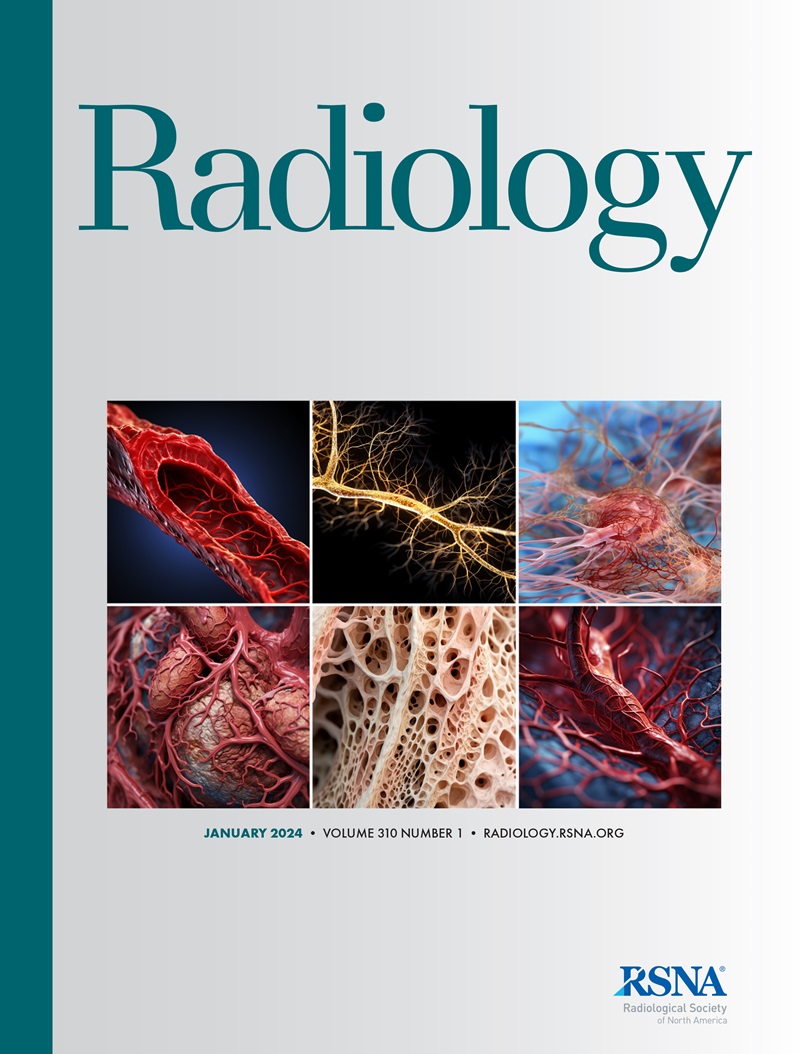Andrew L Callen, Samantha L Pisani Petrucci, Peter Lennarson, Mark F Sedrak, Adriana Gutierrez, Mark D Mamlouk
求助PDF
{"title":"Efficacy of Traditional Epidural Patching versus Patching within Spinal Longitudinal Extradural Collections for Ventral Dural Cerebrospinal Fluid Leaks.","authors":"Andrew L Callen, Samantha L Pisani Petrucci, Peter Lennarson, Mark F Sedrak, Adriana Gutierrez, Mark D Mamlouk","doi":"10.1148/radiol.242194","DOIUrl":null,"url":null,"abstract":"<p><p>Background Epidural blood patching is frequently used to treat spontaneous intracranial hypotension (SIH) due to cerebrospinal fluid leaks. However, its effectiveness in sealing ventral dural tears, particularly in chronic cases with organized spinal longitudinal extradural collections (SLECs), is not well documented. Purpose To assess the efficacy of intra-SLEC patching compared with traditional patching for treatment of ventral dural tears. Materials and Methods This two-site retrospective cross-sectional study conducted between January 2019 and July 2024 included patients with SIH due to a ventral dural tear who underwent epidural patching. Organized SLECs, characterized by sharply demarcated, convex edges and confined to the ventral epidural space, were distinguished from unorganized SLECs, which show fluid distribution in both ventral and dorsal spaces. The Fisher exact test was used to compare the complication rate between treatment groups, and the χ<sup>2</sup> test was used to compare the proportion of patients with SLEC resolution between treatment groups. Results Fifty-two patients (mean age, 44.9 years ± 9.5 [SD]; 30 male patients) were included; before treatment, 39 had organized SLECs and 13 had unorganized SLECs. Overall, 25% (13 of 52) of patients had SLEC resolution after treatment. Organized SLECs were less likely to resolve than unorganized SLECs (six of 39 [15%] vs seven of 13 [54%]; <i>P</i> = .02). In patients with organized SLECs, intra-SLEC patching had a higher success rate (33%; five of 15) than traditional patching (4%; one of 24; <i>P</i> = .046). Multivariable analysis showed that intra-SLEC patching (odds ratio, 13.24 [95% CI: 1, 149]; <i>P</i> = .04) and unorganized SLECs (odds ratio, 21.47 [95% CI: 2, 216]; <i>P</i> = .009) were associated with higher odds of SLEC resolution. Conclusion In 25% of patients with SIH, MRI performed after epidural blood patching showed resolution of the SLEC. Intra-SLEC patching was more effective than traditional patching for treating organized SLECs. © RSNA, 2025 See also the editorial by Urbach in this issue.</p>","PeriodicalId":20896,"journal":{"name":"Radiology","volume":"314 3","pages":"e242194"},"PeriodicalIF":12.1000,"publicationDate":"2025-03-01","publicationTypes":"Journal Article","fieldsOfStudy":null,"isOpenAccess":false,"openAccessPdf":"","citationCount":"0","resultStr":null,"platform":"Semanticscholar","paperid":null,"PeriodicalName":"Radiology","FirstCategoryId":"3","ListUrlMain":"https://doi.org/10.1148/radiol.242194","RegionNum":1,"RegionCategory":"医学","ArticlePicture":[],"TitleCN":null,"AbstractTextCN":null,"PMCID":null,"EPubDate":"","PubModel":"","JCR":"Q1","JCRName":"RADIOLOGY, NUCLEAR MEDICINE & MEDICAL IMAGING","Score":null,"Total":0}
引用次数: 0
引用
批量引用
Abstract
Background Epidural blood patching is frequently used to treat spontaneous intracranial hypotension (SIH) due to cerebrospinal fluid leaks. However, its effectiveness in sealing ventral dural tears, particularly in chronic cases with organized spinal longitudinal extradural collections (SLECs), is not well documented. Purpose To assess the efficacy of intra-SLEC patching compared with traditional patching for treatment of ventral dural tears. Materials and Methods This two-site retrospective cross-sectional study conducted between January 2019 and July 2024 included patients with SIH due to a ventral dural tear who underwent epidural patching. Organized SLECs, characterized by sharply demarcated, convex edges and confined to the ventral epidural space, were distinguished from unorganized SLECs, which show fluid distribution in both ventral and dorsal spaces. The Fisher exact test was used to compare the complication rate between treatment groups, and the χ2 test was used to compare the proportion of patients with SLEC resolution between treatment groups. Results Fifty-two patients (mean age, 44.9 years ± 9.5 [SD]; 30 male patients) were included; before treatment, 39 had organized SLECs and 13 had unorganized SLECs. Overall, 25% (13 of 52) of patients had SLEC resolution after treatment. Organized SLECs were less likely to resolve than unorganized SLECs (six of 39 [15%] vs seven of 13 [54%]; P = .02). In patients with organized SLECs, intra-SLEC patching had a higher success rate (33%; five of 15) than traditional patching (4%; one of 24; P = .046). Multivariable analysis showed that intra-SLEC patching (odds ratio, 13.24 [95% CI: 1, 149]; P = .04) and unorganized SLECs (odds ratio, 21.47 [95% CI: 2, 216]; P = .009) were associated with higher odds of SLEC resolution. Conclusion In 25% of patients with SIH, MRI performed after epidural blood patching showed resolution of the SLEC. Intra-SLEC patching was more effective than traditional patching for treating organized SLECs. © RSNA, 2025 See also the editorial by Urbach in this issue.

 求助内容:
求助内容: 应助结果提醒方式:
应助结果提醒方式:


